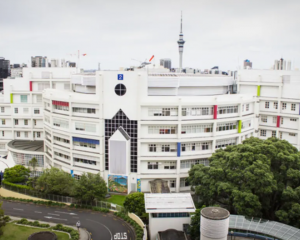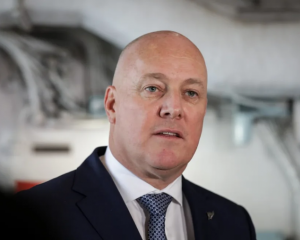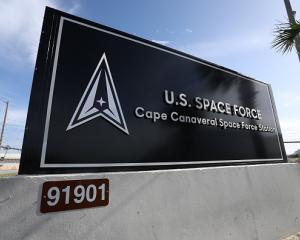KiwiRail has confirmed the Napier to Gisborne rail line has been mothballed for "the foreseeable future" because it is too expensive to repair and maintain.
Chief executive Jim Quinn said today that a $4 million repair bill from storm damage earlier this year and increased maintenance costs of $6 million per year made the line unprofitable.
The decision is likely to result in "a small number of job losses", Mr Quinn said.
Freight rail services to Gisborne had been suspended since March after serious storm damage caused large washouts north of Wairoa.
Mr Quinn said KiwiRail staff had taken "a long and hard look at future business prospects for the rail freight line and had determined it unlikely to generate sufficient revenue in the foreseeable future to cover costs".
Repairing the line was expected to cost about $4 million and take several months.
Ongoing costs to maintain the track and structures along it were likely to rise from $2 million a year to $6 million.
Mr Quinn said staff had spent "considerable time canvassing" businesses about existing and future opportunities and assessed the line's 10-year future.
It found revenue on the line could grow from its current level of about $1 million to about $2.5 million per year, resulting in a deficit between $5 million and $8 million.
"We acknowledge the support given by the local businesses and the wider community for retaining rail to the region," Mr Quinn said.
"However, we need to ensure we invest in areas of the network where we are able to grow business to a level it is commercially sustainable and sometimes that means making hard decisions.
"Since 2010 the Government has invested $750 million in the rail freight business as part of our strategy to get the business operating commercially and on a more sustainable financial footing."
KiwiRail last week announced it would cut 20 per cent of its infrastructure and engineering workforce, with the loss of 158 jobs by the end of October.
Mr Quinn said the company was yet to decide how many jobs would be lost by cutting the Gisborne Napier line.
"We will be working through that process with local staff and the union over the coming weeks."
Mr Quinn said KiwiRail had the option to reinstate the line if a "major revenue-generating opportunity" arose in the future.
KiwiRail also assessed the option of operating rail services between Wairoa and Napier, but said the option was dropped because majority of freight movements were to or from Gisborne.
More than 10,000 people signed a petition asking the Government to fix the line after the storm damage. The petition was delivered to Parliament but the Government declined to act on it.
Locals also protested the decision to mothball the rail line, saying it would have a disastrous effect on the local economy.
The Green Party said KiwiRail's decision to close the rail line was a huge disappointment for the Gisborne community and a result of the National Government's wrong-headed transport policy.
Greens' transport spokeswoman Julie Anne Genter said taxpayer money was being poured into motorway projects while energy-efficient rail was being strangled for want of a few million dollars.
"Rail lines are expected to generate maximum profits, but the wider economic benefits they create are ignored. The opposite seems to be the case for the National Government's uneconomic motorways," she said.
"This is a huge blow to the Gisborne economy and to the local community, which has fought so hard to save its rail line. It is a disgrace that their pleas have been ignored for want of $4 million in repairs," she said.
National East Coast MP Anne Tolley said the decision on the line's future had taken so long because the figures produced by KiwiRail and Gisborne transporters had to be thoroughly "crawled over".
As well as a $3 million to $4 million repair, other work needed on the line would be too costly.
"We have all known for the last 10-15 years there has been a lack of maintenance. There are a large number of bridges that need maintenance and that is costed at $6m a year," she said.
Mrs Tolley said that even with the projected freight increase, each train would need to be subsidised by $37,000.
"KiwiRail has not got the money and I could not convince Cabinet to subsidise that."
In reality there was no real "anchor" customer to build a rail-freight business around.
"In the future if someone like Hikurangi (which is looking to build a mill here in the future) came along then we can have another look at it."
To soften the blow, the Government announced it would spend $4 million in the next three years on roading, to create passing opportunities between Gisborne and Napier.
Mrs Tolley said that was over and above the $9 million to $10 million realignment and resurfacing programme already announced for that section of road.
KiwiRail is also working with Gisborne City Vintage Railway to explore possible options for continued heritage operations.
The Rail and Maritime Transport Union (RMTU) accused the Government and KiwiRail of letting down the East Coast and Hawkes Bay communities with "a defeatist attitude".
"We are witnessing the line-by-line destruction of the national rail network," RMTU organiser Phil Spanswick said.
"If this is what the KiwiRail Turnaround Plan represents, then regional communities will be angry that KiwiRail is systematically mothballing lines to manage the network into extinction, rather than having a long-term plan that recognises the critical role rail will play into the future."
Mr Spanswick said a mothballed rail line was difficult to return to operation and posed "an immediate safety risk for rail staff to operate if it is needed at short notice, such as in natural disasters".












